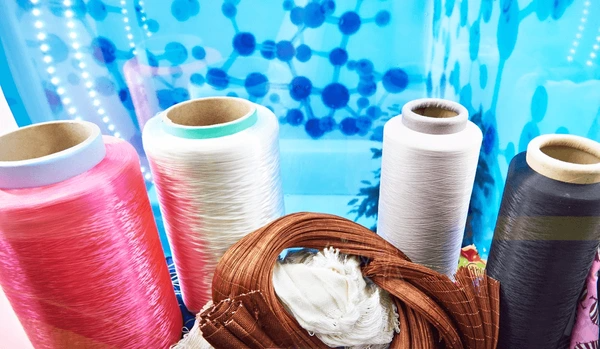
What Is Polyamide?
Polyamides, commonly known as nylons, are a class of synthetic polymers containing recurring amide (-CONH-) groups in their main chain. They are crystalline polymers typically produced by the condensation polymerization of a dicarboxylic acid and a diamine.

Properties of Polyamide
- High mechanical strength, stiffness, and toughness
- Excellent wear resistance and low coefficient of friction
- Good thermal stability and resistance to heat aging
- Low moisture absorption and dimensional stability
- Resistance to chemicals, solvents, and abrasion
- Crystalline or semi-crystalline structure
Classification of Polyamide
Polyamides can be classified based on their chemical structure and composition:
- Aliphatic polyamides: Derived from aliphatic monomers, such as polyamide 6 (PA6) and polyamide 66 (PA66).
- Semi-aromatic polyamides: Contain both aliphatic and aromatic components, like polyamide 46 and polyamide 610.
- Aromatic polyamides (aramids): Contain at least 85% of the amide groups directly connected to two aromatic groups, known for their exceptional thermal and chemical resistance.

Production of Polyamide
Several methods are employed for polyamide production, including:
- Interfacial polycondensation: Involves the reaction of a diamine and a diacid chloride at the interface of two immiscible solvents.
- Solution polycondensation: Polymerization occurs in a suitable solvent, often using dicarboxylic acids and diamines as monomers.
- Solid-phase polymerization: A two-step process involving the formation of a low molecular weight prepolymer, followed by solid-state polymerization at high temperatures.
- Direct melt polycondensation: Monomers are directly polymerized in the molten state without the use of solvents.

Applications of Polyamide
Automotive Industry
Polyamides are extensively used in the automotive industry for components such as fuel lines, air intake manifolds, engine covers, and electrical connectors. Their heat resistance, chemical resistance, and mechanical strength make them ideal for under-the-hood applications.
Textile and Apparel Industry
Polyamide fibers, commonly known as nylons, are widely used in the textile and apparel industry for applications such as hosiery, sportswear, and outdoor gear. Their high strength, abrasion resistance, and moisture-wicking properties contribute to their popularity.
Electronics and Electrical Industry
Manufacturers use polyamides as insulation materials for electrical wires, connectors, and circuit boards because of their excellent electrical insulation properties and thermal stability. They also produce electronic components and housings from polyamides.
Packaging Industry
Polyamides are employed in the packaging industry for applications such as food packaging films and bottles. Their barrier properties against gases and moisture, as well as their chemical resistance, make them suitable for preserving the quality and freshness of packaged products.
Aerospace and Defense Industry
The high strength-to-weight ratio and thermal stability of polyamides make them attractive for applications in the aerospace and defense industries, such as aircraft components, protective gear, and ballistic-resistant material
Application Cases
| Product/Project | Technical Outcomes | Application Scenarios |
|---|---|---|
| Nylon 6 Automotive Air Intake Manifolds | Utilising nylon’s high heat resistance and dimensional stability, these manifolds can withstand temperatures up to 200°C while maintaining precise tolerances, improving engine efficiency and reducing emissions. | Automotive under-the-hood components requiring high heat resistance and dimensional precision. |
| Nylon 6,6 Gears and Bearings | Leveraging nylon’s high strength, toughness, and lubricity, these components exhibit excellent wear resistance and low friction, enabling longer service life and reduced maintenance requirements. | Industrial machinery, robotics, and automotive powertrain systems demanding durable, self-lubricating components. |
| Nylon 6 3D Printing Filaments | Nylon’s high strength-to-weight ratio and chemical resistance allow for the production of lightweight yet durable 3D-printed parts with excellent surface finish and chemical compatibility. | Additive manufacturing of functional prototypes, end-use parts, and tooling for various industries, including aerospace, automotive, and consumer goods. |
| Nylon 6,6 Monofilaments for Fishing Lines | Nylon’s high tensile strength, abrasion resistance, and flexibility make these monofilaments ideal for fishing lines, providing superior knot strength, castability, and durability in harsh aquatic environments. | Recreational and commercial fishing industries, where high-performance and long-lasting fishing lines are essential. |
| Nylon 6 Membranes for Water Filtration | Nylon’s chemical resistance and semi-permeability enable the production of robust and selective membranes for water purification, effectively removing contaminants while maintaining high flux rates. | Municipal and industrial water treatment facilities, desalination plants, and point-of-use water filtration systems. |
Latest Technical Innovations of Polyamide
Reinforced and Composite Polyamides
You can reinforce polyamides with various fillers, such as glass fibers, carbon fibers, or nanoparticles, to enhance their mechanical properties, thermal stability, and dimensional stability. These reinforced polyamides find applications in high-performance components and structural parts.
Biobased and Biodegradable Polyamides
Researchers are exploring the development of biobased and biodegradable polyamides derived from renewable resources, such as plant-based monomers or biomass. These eco-friendly polyamides aim to reduce the environmental impact and promote sustainability.
Conductive and Electromagnetic Shielding Polyamides
Incorporating conductive fillers or coatings makes polyamides electrically conductive or provides them with electromagnetic shielding properties. These modified polyamides find applications in electronics, telecommunications, and aerospace industries.
High-Performance Polyamides
Advanced polyamide formulations, such as polyarylamides and polyphthalamides, offer superior thermal stability, chemical resistance, and mechanical properties compared to conventional polyamides. These high-performance polyamides are suitable for demanding applications in the aerospace, automotive, and oil and gas industries
Technical Challenges of Polyamide
| Enhancing Mechanical Properties of Polyamides | Integrating reinforcing fillers or modifiers into polyamide matrices to improve mechanical strength, modulus, and impact resistance. |
| Improving Thermal Stability and Dimensional Stability of Polyamides | Developing polyamide formulations with enhanced thermal resistance and reduced moisture absorption to maintain dimensional stability at high temperatures. |
| Increasing Chemical and Solvent Resistance of Polyamides | Modifying polyamide structures or incorporating additives to enhance resistance against various chemicals, solvents, and environmental factors. |
| Optimising Processing and Moulding of Polyamides | Improving the processability, melt flow, and moulding characteristics of polyamides for efficient manufacturing of complex parts and components. |
| Developing Sustainable and Bio-based Polyamides | Exploring renewable and bio-derived monomers or feedstocks for the production of environmentally friendly and sustainable polyamide materials. |
To get detailed scientific explanations of polyamide, try Patsnap Eureka.

